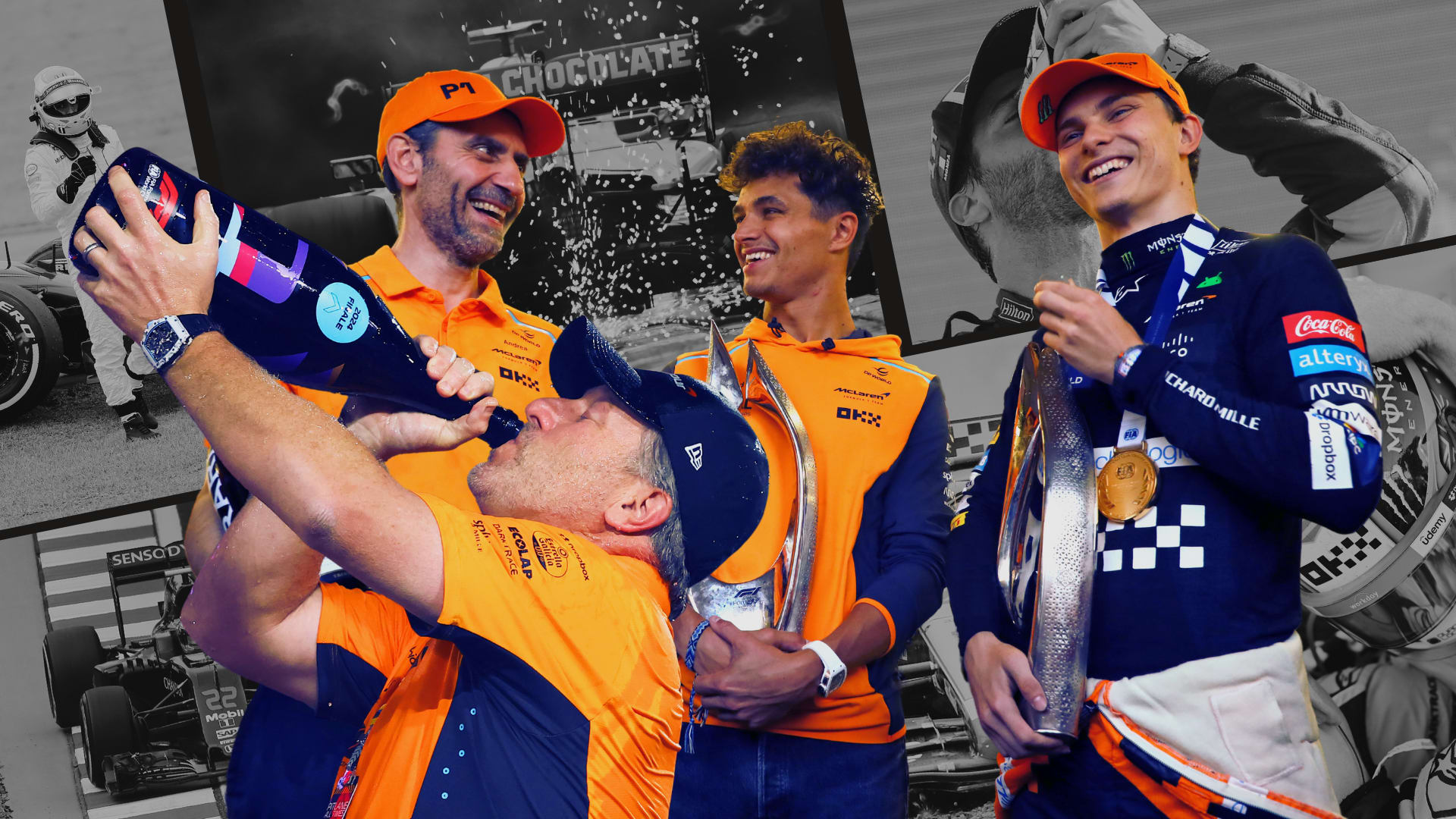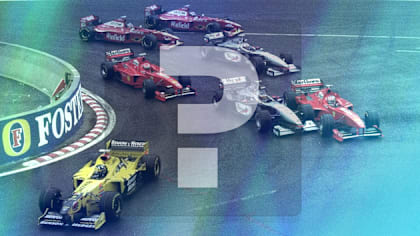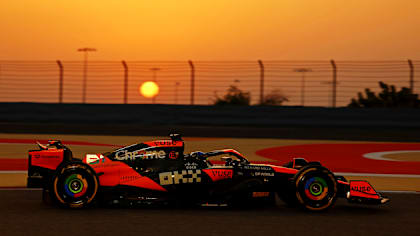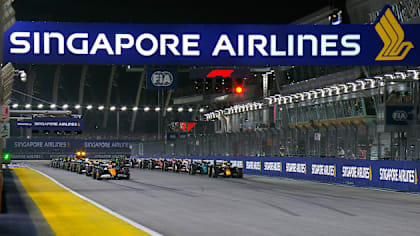
Feature
How Hamilton’s Austrian GP strategy backfired on him and played into Bottas’ hands

Share

With a crazy, high-octane thriller of a race, F1 returned at the Red Bull Ring – and the outcome was a tense victory from pole for Mercedes’ Valtteri Bottas. A superb over-achieving second and third respectively for Charles Leclerc’s Ferrari and Lando Norris’s McLaren came once a 5s penalty had been added to the time of Lewis Hamilton, who actually shadowed Bottas across the line.
But what had caused it to play out the way it did? There are always crucial choices made which, in hindsight, determine the shape of a race. In this case it was an innocuous, routine bit of operational detail at Mercedes during qualifying which turned out to be profoundly significant. Let’s trace it back.
The Red Bull Ring is one of the circuits at which it’s possible to find significant lap time from the slipstream – between 0.15s-0.3s if you get it right. Most teams just leave their drivers to try to find their own tow from other cars once out on track.
At Mercedes, there is a specific policy of an alternating choice at each race between Hamilton and Bottas over who goes out first. At some tracks it’s better to be the car in front, but not this one. At this race it was Hamilton’s turn – and he chose to be the car behind in the crucial Q3 runs, so as to benefit from Bottas’ tow. Bottas would have to make his own arrangements as best he could. At the next race, it will be Bottas’ turn to choose.
WATCH: All the best bits as the F1 season kicks off with a bang in Austria
WATCH: The yellow flag incident that cost Hamilton 3 grid places
The reason that turned out to be so crucial to the whole weekend was the part it played in Hamilton’s grid penalty for a yellow flag infringement in the dying moments of Q3. The yellows were momentarily out as a result of Bottas – pushing hard, and without a tow - spinning away his final qualifying lap on the exit of turn 4. Hamilton was next on the scene.
The yellows were quickly cancelled as Bottas did not rejoin the track, as expected, but stayed over on the grass. But Hamilton was later adjudged to have committed the offence, as footage uncovered not long before the race was presented by Red Bull to the stewards.
READ MORE: Bottas says he 'dodged many bullets' to win season-opening Austrian Grand Prix
Hamilton was penalised three grid places.
A quite different race would likely have unfolded had Hamilton taken his provisional position on the outside of the front row. Might he have been able to lead away at the start?
Austrian Grand Prix 2020: Albon spins into gravel after Hamilton collision
By the time he’d found a way past Alex Albon and Lando Norris – and benefitted from the early retirement of Max Verstappen - Hamilton was almost 8s adrift of Bottas. He got that gap down to under 4s in the next 13 laps, but the first safety car (to clear Magnussen’s Haas) then effectively neutered his challenge.
The timing of the second safety car – just after the Mercedes had passed the pit entry road – allowed Albon an almost-free pit stop late enough in the race to make soft tyres feasible, and wiped out what had been a sizeable deficit to the Mercedes.
READ MORE: Verstappen rues loss of ‘easy podium’ in Austria season opener
On fresh tyres versus the 34 lap-old mediums on both Mercs at the restart (after a third safety car, almost immediately after the second), Albon had to attack immediately if he was to take advantage of how much longer it would take the worn rubber on the Mercedes to come up to temperature. That was the backdrop to his collision with Hamilton as he was trying to pass around his outside at turn 4 - an incident that dropped Albon (who later retired) to the back, and which invoked Hamilton’s 5s penalty that dropped him behind Leclerc and Norris in the official results.
Hamilton could look back and ponder that had Bottas not spun the day before, his whole afternoon would have been quite different.
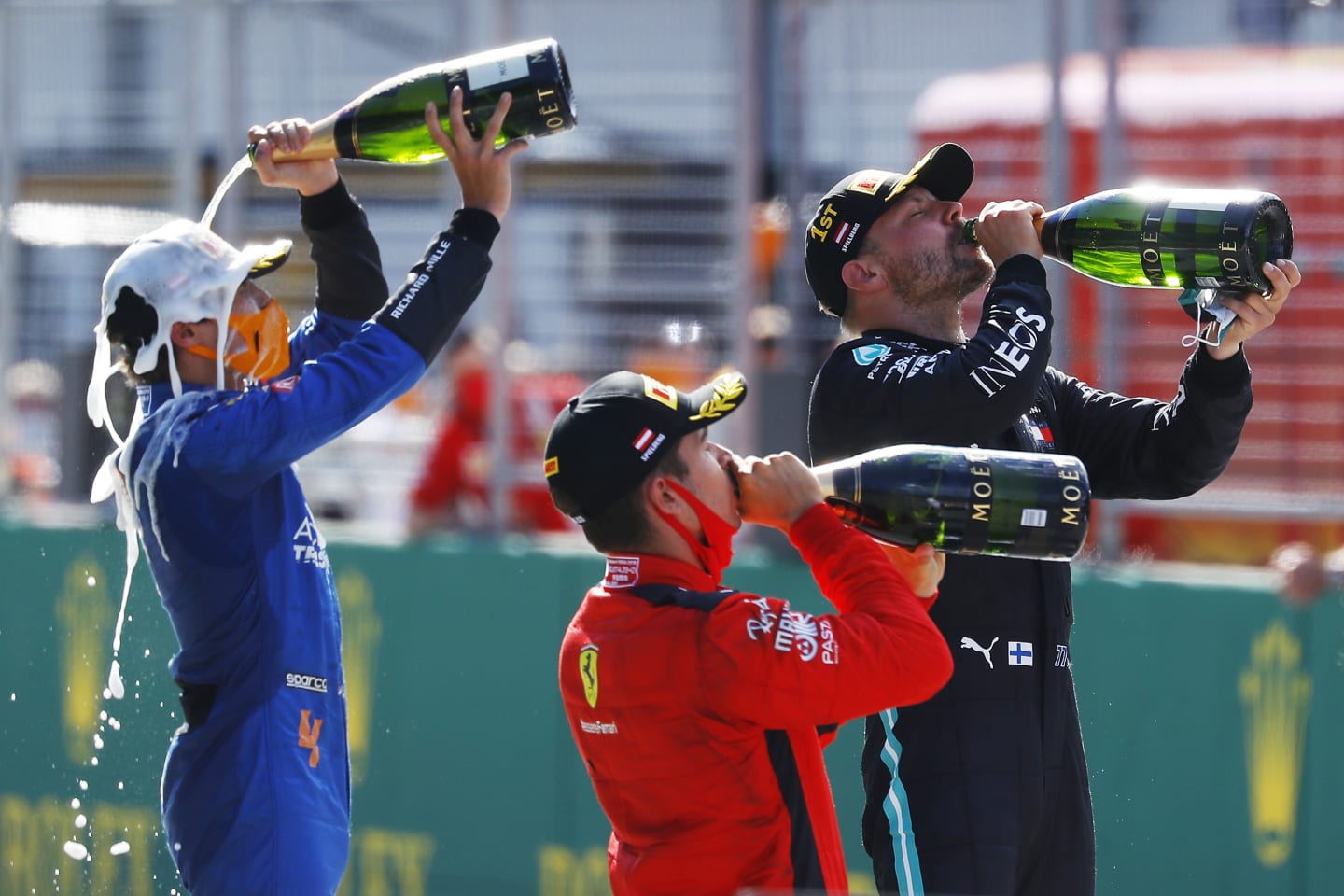
The podium: Valtteri Bottas, Charles Leclerc and Lando Norris celebrate an incredible race
In the normal, straight running of the race, without any penalties or safety cars, the Mercedes had the pace to have dominated. Half-a-second clear of the field in qualifying, their only feasible threat would have been Verstappen’s Red Bull – but only by virtue of a tyre strategy offset that might or might not have allowed him to chase and catch the Mercedes late in the race on fresher tyres. He’d been the only one to go through Q2 on the medium tyre rather than the faster soft.
WATCH: PADDOCK PASS: Post-race at the 2020 Austrian Grand Prix
Mercedes had looked seriously at doing the same but ultimately decided against it, reasoning that their pace advantage was enough to cover the downside risk. The upside was that it allowed the choice of either the hard or the medium for the second stint. For Red Bull, there was nothing to lose.
It’s unlikely the kaleidoscope of possibilities will fall the same way at the same venue next weekend and it will be fascinating to see how the lessons learned at the first race will be applied then.
YOU MIGHT ALSO LIKE
FeatureF1 Unlocked F1 QUIZ: Spa-Francorchamps special – Test your knowledge of Grand Prix history at the historic Belgian track
Report Ismael Fahssi wins opening round of 2025 F1 Sim Racing World Championship for Williams
News All the key pre-season dates for F1 2025
News Formula 1 and Singapore Airlines renew Singapore Grand Prix title sponsorship
